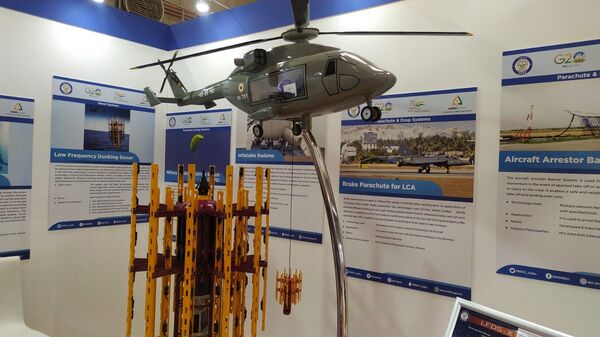
The DRDO's Naval Physical and Oceanographic Laboratory has developed the Low Frequency Dunking Sonar-X – a model of which is pictured above – for use on India's Dhruv Advanced Light Helicopter. (Janes/Chinmay Kohad)
The Naval Physical and Oceanographic Laboratory (NPOL) – an agency under India's Defence Research and Development Organisation (DRDO) – has unveiled a model of its Low Frequency Dunking Sonar (LFDS)-X system at the Aero India 2023 show being held in Bangalore from 13 to 17 February.
The sonar, which has a length of around 1.5 m, can be employed for anti-submarine warfare operations. It features a lightweight configuration and has electromechanical actuation to enable retracted array fitment in a helicopter.
The LFDS-X has been developed for the naval version of India's Dhruv Advanced Light Helicopter but can be deployed from other rotary-wing platforms. Janes understands that the sonar is currently undergoing trials.
The system is deployed using a winch system to dip it at various depths. The sonar can be used in both active and passive modes and can simultaneously process inputs from sonobuoys and other dunking sonars to triangulate the position of targets in littoral waters.
In addition to NPOL, companies involved in the development of the LFDS-X include Bharat Electronics, Keltron Controls, Sika Interplant Systems, Data Patterns, and CoreEl Technologies.
Looking to read the full article?
Gain unlimited access to Janes news and more...







